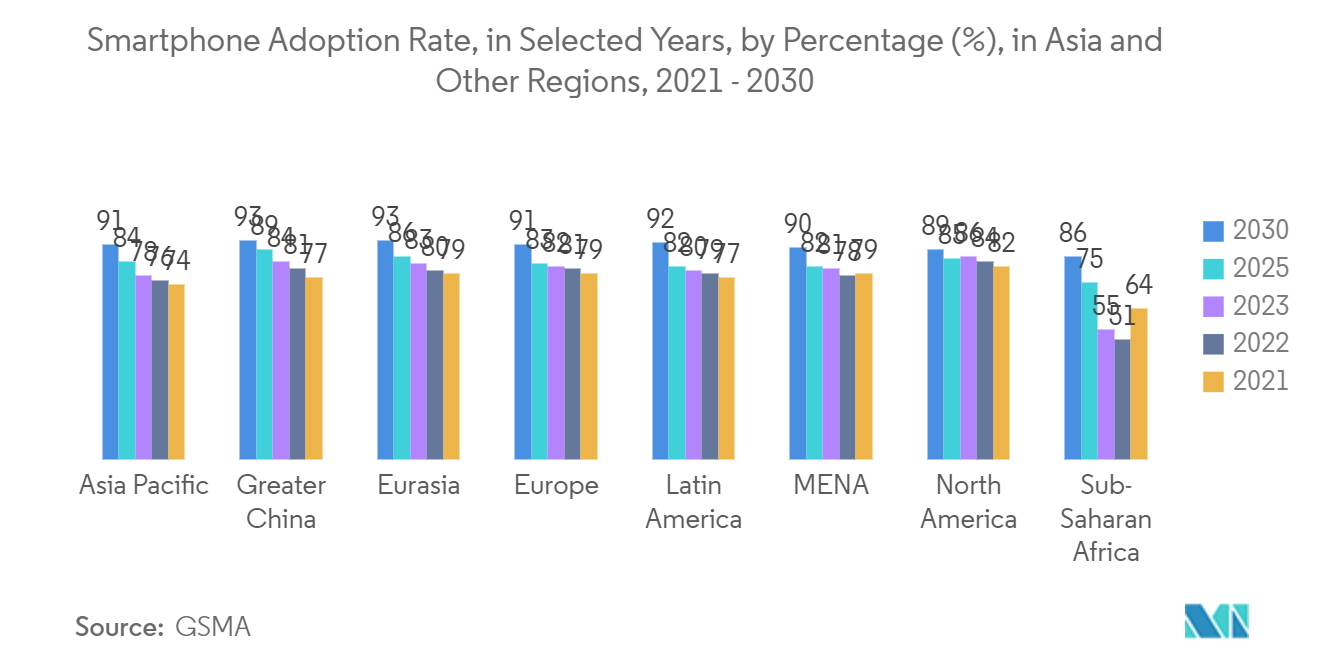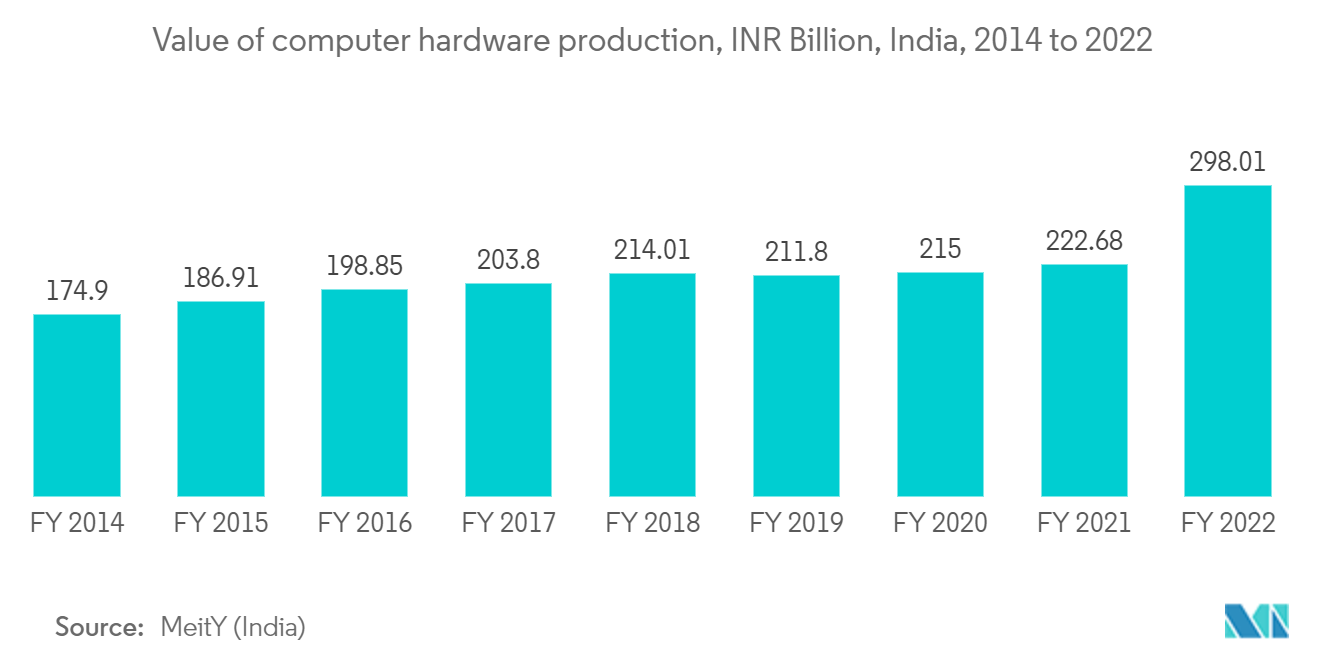Market Trends of APAC Semiconductor Device Industry In Consumer Industry
The Integrated Circuits Segment is Expected to Drive the Market's Growth
- The rising proliferation of smartphones, feature phones, and tablets is driving the market. Analog ICs are used in a wide range of applications, including third and fourth-generation (3G/4G) radio base stations and portable device batteries. RFICs (radio frequency ICs) are analog circuits that usually run in the frequency range of 3 kHz to 2.4 GHz (3,000 hertz to 2.4 billion hertz) circuits that would work at about 1 THz (1 trillion hertz). They are widely used in cell phones and wireless devices. As they are under development, the analog IC market in this segment is expected to grow.
- Next-generation automobiles are expected to include features such as speech recognition, video and image compatibilities, and ICs in LED front lighting to provide an optimal driving experience. GPS tracking is now an essential component of automobiles, which drives the demand for analog circuitry to facilitate data transmission.
- Maruti Suzuki India, the country's top automaker by sales, plans to have six EV models by 2030. Further, the company plans to roll out the first battery EV from Maruti's plant in the state of Gujarat by the end of 2024. Similarly, in June 2023, Honda Motors announced its plans to offer an electric vehicle in India within the next three years as part of the Japanese automaker’s bid to capture the growing demand for EVs in a major global market. Such steps taken by global automobile manufacturers are anticipated to contribute to the growth of the market studied.
- China is also targeting the electric vehicles market, with more than one in three new car registrations in China being electric in 2023, as stated by IEA. Further, as per the National Development and Reform Commission (NDRC), more than 110 new NEV models are expected to be launched in 2024. For 2024, BYD, Huawei’s Aito, and Li Auto alone are planning to increase deliveries by 2.3 million vehicles. The Chinese government has also been formulating technology standards and industry guidelines for autonomous vehicles. Beijing became the country’s first city to allow open road tests for autonomous cars.
- The growing proliferation of the Industry 4.0 concept in the industrial sector is among the significant factors driving the growth of the studied market. For instance, the adoption of automation and robotics technologies has increased globally in recent years. According to the International Federation of Robotics, in 2023, global industrial robot installations were anticipated to grow by about 7% to more than 5,90,000 units. Furthermore, China is expected to remain the central market for installing industrial robots.

India is Expected to Witness a High Market Growth
- Discrete semiconductors are used in various electronic products, including smartphones. These semiconductors perform minor electronic functions, including power conversion, voltage regulation, data transmission, and high-definition digital displays in smartphones. Some of the many discrete semiconductors used in smartphones include transistors, diodes, and power devices.
- According to the India Cellular and Electronics Association (ICEA) projections, India's smartphone exports more than quadrupled to USD 11.1 billion (Rs 91,000 crore) in FY23, up from USD 5.48 billion (Rs 45,000 crore) the previous year, owing mainly to the Apple juggernaut. Furthermore, the Ministry of Information and Broadcasting secretary stated that India will have over 1.2 billion mobile phone users and 600 million smartphone users in 2022. Such massive exports of smartphones and a vast number of smartphone users would drive the demand for the studied market.
- Computer computers commonly use discrete semiconductor devices for various functions such as power conversion, voltage regulation, and signal processing. These devices are specified to perform electronic parts such as amplification, rectification, and switching. Examples of discrete semiconductor devices used in computers include diodes, transistors, and rectifiers. However, with the continuous scaling of semiconductor technology, integrated circuits are increasingly being used in place of discrete components due to their smaller size, lower cost, and higher performance.
- Further, according to MeitY (India), in the fiscal year 2022, the value of computer hardware production in India was estimated to be around INR 298 billion. This was an increase above the previous fiscal year's production value. The country's computer hardware production value has steadily increased. Further, according to the Department of Commerce, at the end of the fiscal year 2023, the export value for computer hardware from India was estimated to be approximately USD 554 million. Such a rise in computer production and exports would drive the market.
- Developing countries like India are also focusing on ambitions to create semiconductor devices manufacturing capability, and various investments from the vendors in the market are driving the market. For instance, in September 2022, Foxconn and local conglomerate Vedanta, based in Taiwan, invested USD 19.5 billion to set up a manufacturing facility in Gujrat, India. The facility is expected to be operational by 2024.


